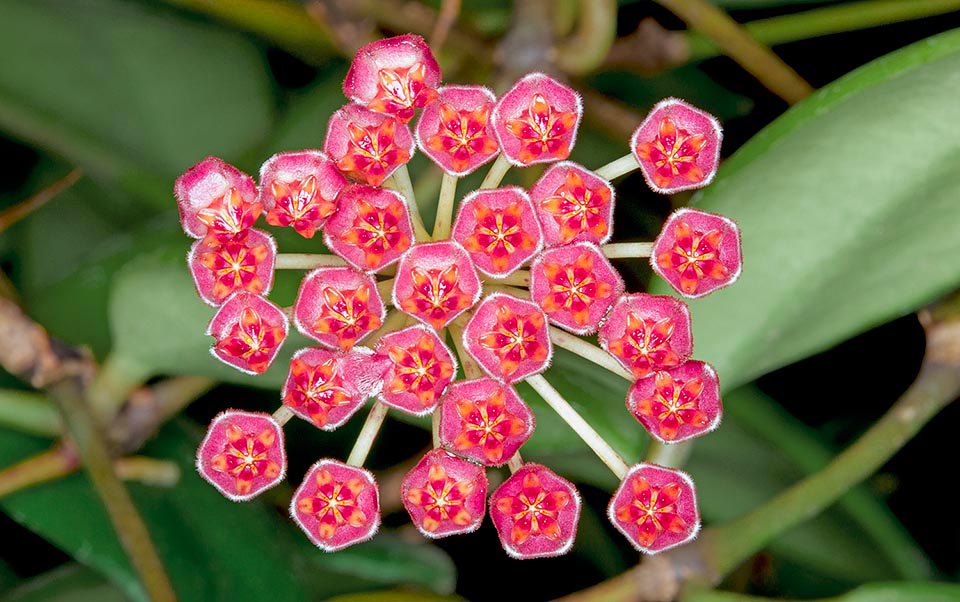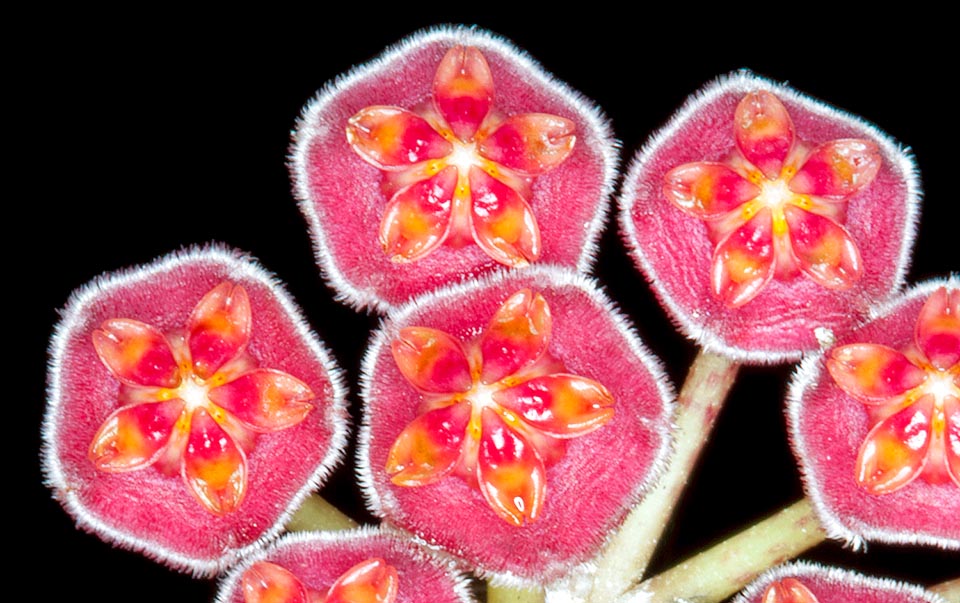Family : Apocynaceae

Text © Pietro Puccio

English translation by Mario Beltramini
The species is native to Philippines (Luzon) where it lives in the humid forests at low and medium altitudes.
The genus is dedicated to Thomas Hoy (ca. 1750-1822), botanist and curator of the gardens of the duke of Northumberland; the specific name is the combination of the Latin substantive “pubes, eris” = down and of the verb “fero” = to carry, with reference to the pubescence present on various parts of the plant.
The Hoya pubifera Elmer (1938) is an evergreen climbing species, ramified and lignified at the base, with young and thin and herbaceous stems provided of adventitious roots for the anchorage on the supports. The leaves, on a 1-3 cm long petiole, are simple, opposite, oblong to oblanceolate with obtuse to subacute apex and entire margin, coriaceous, slightly pubescent above, papillose below, of pale green colour, 6-12 cm long and 2-3 cm broad.

Climber with adventitious roots, the Hoya pubidera climbs, ramifying, the trees of the humid Filipino forests © Giuseppe Mazza
It reproduces by seed, placed superficially in particularly draining loam maintained humid at the temperature of 24-26 °C, by cutting, with 2-3 nodes, and by air-layering.
Species discussed from the point of view of the nomenclature, as there is no agreement among the scholars whether to consider it as a species or as a synonym. Fairly rare in cultivation, requires a humid warm climate, suitable therefore to be cultivated in open air in the tropical and humid subtropical climate regions, in a very luminous position, also with some hours of direct sun in the morning.

Rare in cultivation, it may have even 30 small unusual corollas merged in pyrotechnic ubelliform inflorescences © Giuseppe Mazza
→ To appreciate the biodiversity within the APOCYNACEAE family please click here.
